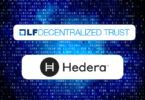Hyperledger, the open source community for enterprise blockchain technology, today announced the results of its Technical Steering Committee elections. In the outgoing committee, five of eleven members were from IBM, with a sixth from IBM owned Red Hat. The committee has been expanded to 15 members to reflect the 16 enterprise blockchain projects under the Hyperledger umbrella.
The new committee members represent 11 organizations, up from seven. Including Red Hat, IBM now has five members, with two new members from ConsenSys, and representatives from Walmart, Oracle and Telefonica.
Executive Director of Hyperledger, Brian Behlendorf, was pleased with the greater diversity, although he was keen to ensure IBM’s contribution is recognized, saying their previous influence over the TSC was “fairly reflective of the fact that IBM is still one of the companies that makes the most significant technical contributions to the overall Hyperledger effort. That is not just on Fabric. That is across a number of different projects. And they deserve due credit for that.”
The outgoing TSC was already moderately diverse in terms of gender and ethnicity, although it was almost entirely North American. The committee has new members representing Spain, India and China.
“The TSC is perhaps better thought of as a steering committee for the whole of the Hyperledger community, particularly how we weave our separate efforts together into a logical whole. I’m excited to think about the next year,” said Behlendorf in a statement.
In terms of the TSC’s roles, an important one is deciding which projects get the go ahead or shutdown. If only a small number of projects are represented on the TSC, that can cause issues.
There has been some lively debate in this area in the last couple of months. Transact is a Hyperledger project designed to enable smart contract languages to work across multiple ledgers, much like Digital Asset’s DAML. There were questions about whether Transact should continue as a standalone project which received some pushback.
“The only negativity currently is generated from the TSC and this surrounding discussion fallout,” said Shawn Amundson from Bitwise, a key maintainer of both Transact and Sawtooth. “There is a big difference between ‘how should we get projects to collaborate more’ and ‘we should kill this project we aren’t involved with’,” said Amundson.
Thankfully that’s about as heated as it gets at Hyperledger, with the response to the issues dealt with fairly and logically. The result was Transact is still a standalone project. There was some discussion about the struggles of sharing components across the main Hyperledger DLTs.
Behlendorf shared his thoughts on the same thread: “We all have to get better at building upon each other’s work if we’re going to survive what is clearly still a very long blockchain winter, and very few of the solutions in the market will survive it. My hope is that at least a few of the ones that do are at Hyperledger.”
Free riders
One of the other rumblings we heard from people active in the Hyperledger community was a general comment that not enough code is shared as open source.
“The Freerider problem is inherent (in open source software). It’s something that I believe gets solved over time through an alignment of economic interests,” Behlendorf told Ledger Insights. “IBM has made quite a bit of money from Fabric and that drives their continued investment. And the other cloud vendors have started to see that pay off. I believe as it increases and becomes more core to their business, they will have no choice but to increase their investment in that direction, because that’s the only way they get agency out of their use of this technology. It’s not a short term play.”
Behlendorf elaborated that the companies that contribute code get to steer a project’s direction, calling it a “do-ocracy”.
He clarified that it’s expected that companies will leverage open source to create added value solutions or ‘unique value propositions’ which are proprietary and from which they make money. However, someone may come along that is willing to develop an open source version in the same area. And that’s a risk the proprietary company takes.
Intel steps back
While IBM continues to move forward with Hyperledger Fabric, in 2016 Intel contributed another blockchain, Hyperledger Sawtooth. Behnlendorf mentioned there are at least 25 projects using Sawtooth. We’re aware of some high profile adopters, including Cargill, Target, Salesforce and the Tel Aviv Stock Exchange.
However, currently Bitwise which works closely with Cargill is the primary maintainer of Sawtooth. And Intel’s Dan Middleton, who was previously on the TSC did not stand for re-election. Behlendorf confirmed that “Intel has dialed down its involvement,” which he attributed to its interest in confidential computing. The chip company is participating in the new Confidential Computing Consortium, which is part of the Linux Foundation, Hyperledger’s parent. Intel SGX provides memory encryption for secure enclaves. These enable processors to ring-fence work out of reach of a hacked operating system.
COVID’s opportunities and challenges
Meanwhile, Behlendorf was keen to highlight new sources of momentum in terms of identity, direct COVID-19 projects and central bank digital currencies. Identity is an important use case for proving a recent negative COVID-19 test or, in future, a vaccination. It was a shame that Sovrin, which uses Hyperledger Indy, radically cut staff right before the pandemic took hold in the West. Two COVID-19 related projects we’ve previously written about are Trust Your Supplier and MiPasa.
At the same time, he acknowledged the headwinds and that innovation and experimentation are trickier.
Change at Hyperledger: IBM no longer dominates leadership, Intel steps back“This space is no doubt influenced by this macroeconomic climate that we’re in,” said Behlendorf. He gave examples such as IBM’s Food Trust and Tradelens when he said “but it’s very healthy. We’ve seen the companies that are able to demonstrate their solutions to solid real prosaic problems doing well. ”






